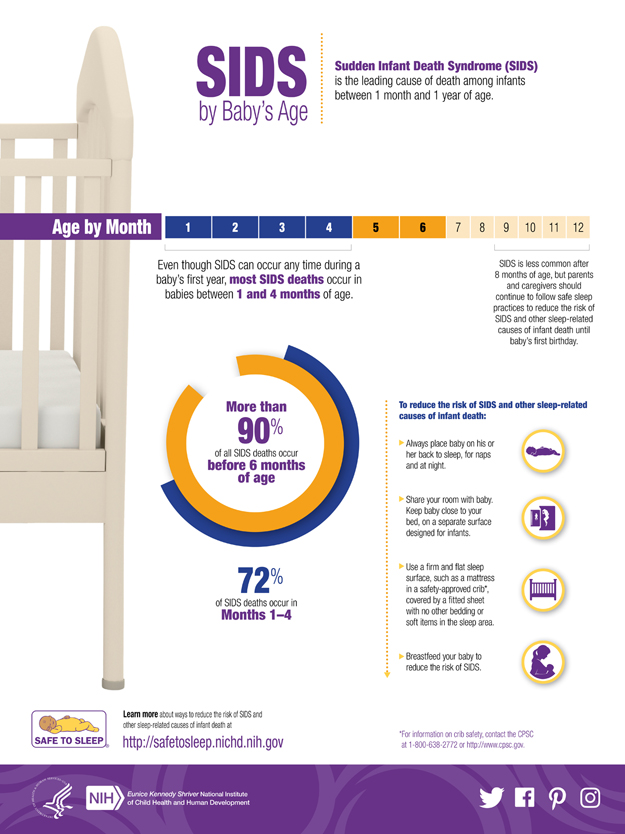SIDS can occur until an infant is a year old. suggest that pacifiers may prevent SIDS. Learn more about infants and safe sleeping: SIDS has no warning signs, and infants generally seem healthy beforehand. Bed-sharing can increase the risk of SIDS by five times among babies younger than three months old. Thank you for taking the time to confirm your preferences. Data from the Centers for Disease Control and Prevention (CDC) show that 1,545 infants died from sudden infant death syndrome (SIDS) in 2014 (the most recent year for which data are available).1, SIDS was the leading cause of death in children between 1 month and 1 year of age in 2013.2, The majority (90%) of SIDS deaths occur before a child is 6 months old, with most happening between 1 month and 4 months of age.3. Unknown cause infant mortality rates remained unchanged from 1990 until 1998, when rates began to increase. This statistic is enough to give a new parent insomnia. In 2017, there were 35.4 SIDS deaths per 100,000 live births in the US. As a result, the ranking may be unreliable due to instability in death rates. Being a twin. Also, you should avoid using crib bumpers. SIDS is more likely if an infants birth parent has: Being a single parent and giving birth to a child at a young age appear to have an association with higher occurrences of SIDS. https://safetosleep.nichd.nih.gov/safesleepbasics/about. The SUID rate was the combination of ASSB, SIDS, and unknown cause deaths. Infographic PDF (542 KB) | Infographic JPG (574 KB), Copy and paste the code below to embed this infographic.

